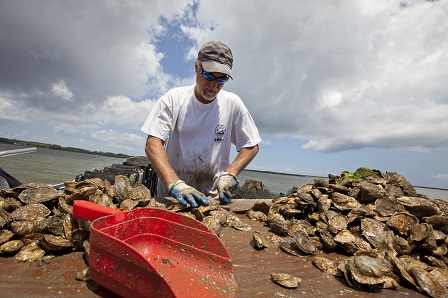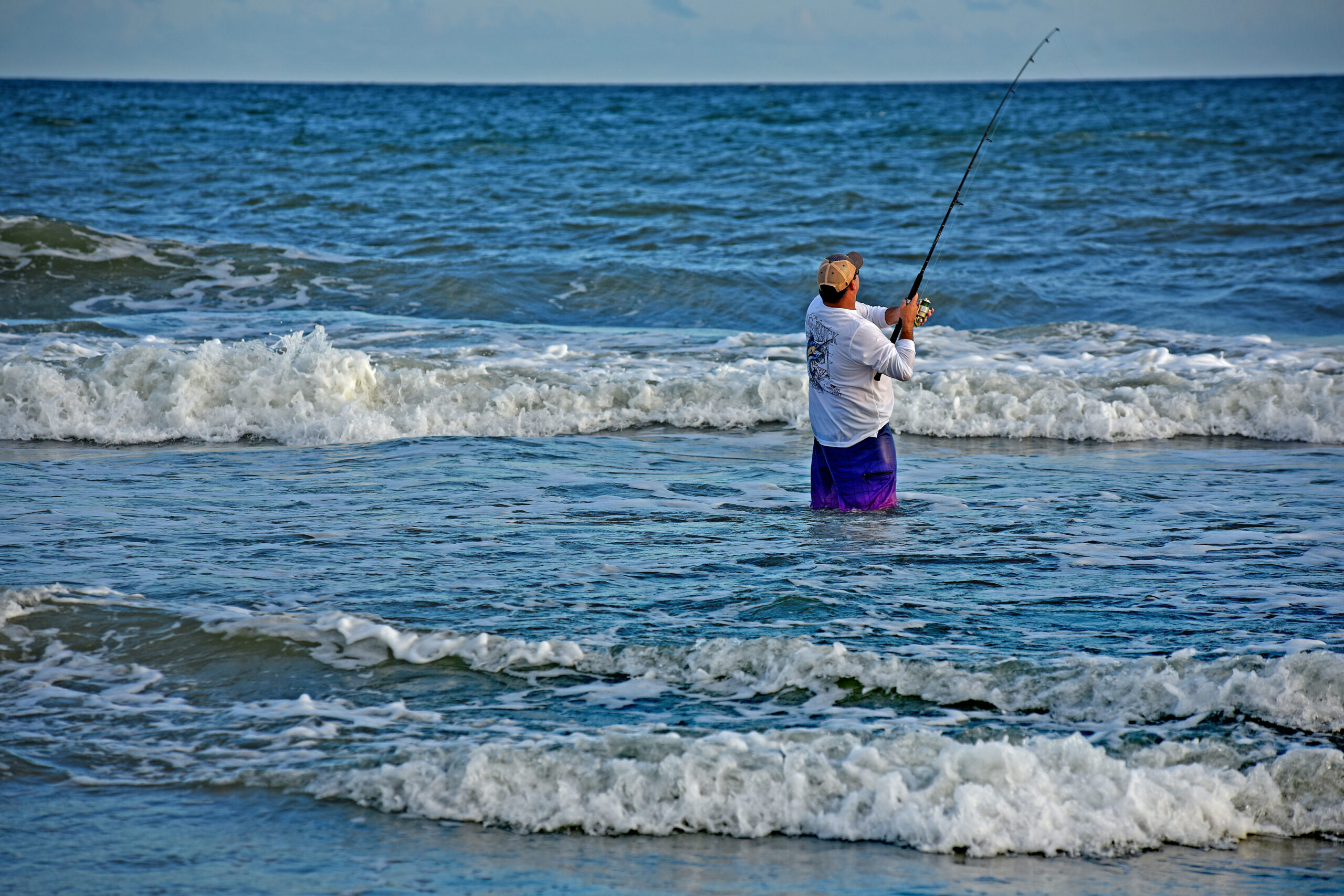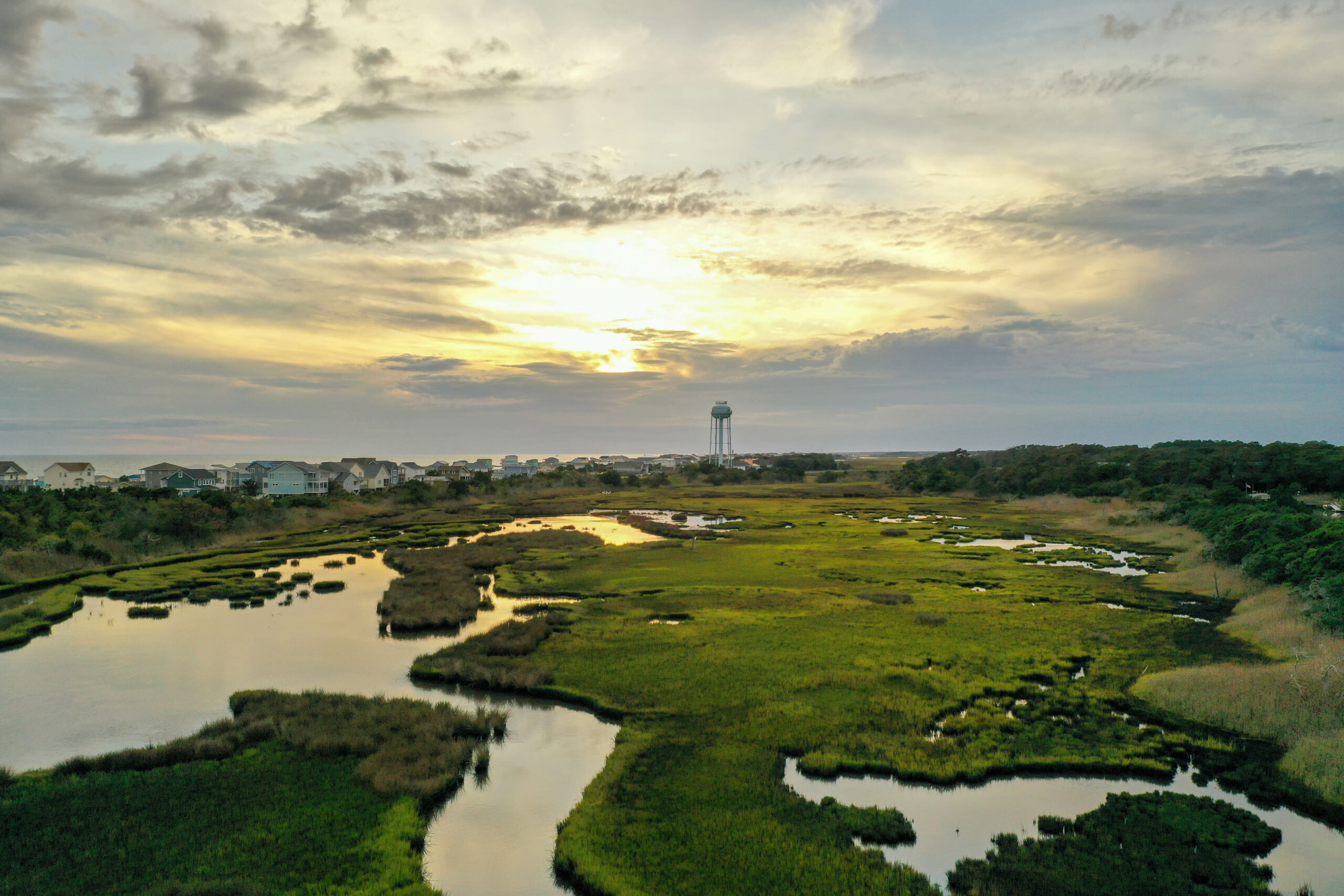Simply Shellfish: Growers Tout Shellfish Aquaculture Sustainability

It’s a sustainable form of agriculture that puts tasty dishes on the tables of restaurants and homes across the country. It’s an industry that stimulates the economy. And it promotes a lifestyle of coastal tradition in North Carolina.
Shellfish aquaculture is expanding in the United States, and the shellfish industry in North Carolina is growing, says Robert Rheault of the East Coast Shellfish Grower’s Association (ECSGA). Rheault is a speaker at the North Carolina Aquaculture Development Conference, Jan. 18-19 in Atlantic Beach.
“Our industry has a great story to tell about our tradition of environmental stewardship and the beneficial environmental impacts of shellfish aquaculture,” Rheault says. “We work closely with environmental groups and the sustainable seafood movement to ensure that we get good marks.”
Colin Brannen of the World Wildlife Fund (WWF), a speaker at a workshop following the main conference, says the East Coast is fairly consistent regarding shellfish fanning methods that meet a demand from consumers.
“In general, Americans don’t eat a lot of shellfish,” Brannen says. “But they’re starting to discover that shellfish are pretty tasty, and they’re good for the environment. It’s been the last five to 10 years that the industry has begun to take hold.”
INDUSTRY FLOW
The N.C. Division of Marine Fisheries (DMF) regulates the shellfish industry statewide. Shellfish farmers lease the sites where they grow their crops, and these leases are under the authority of the DMF.
Craig Hardy, resource enhancement section chief, explains the roles that DMF plays in regulating the shellfish industry.
Advisory: working with prospective lease-holders to identify appropriate sites.
Administrative: ensuring fair and thorough processes regarding lease applications and investigations.
Regulatory: enforcing compliance with requirements and fisheries rules for cultured and wild harvest of shellfish.
A major issue affecting the shellfish industry is decreasing coastal water quality, Hardy says, pointing to an increase in coastal development during the past 20 years.
“The population of the state has grown substantially,” he says. “Oyster and shellfish waters are recipients of everything from the Blue Ridge Mountains down because of stormwater runoff.”
Hardy explains that water quality is not the only issue affecting the shellfish industry in North Carolina.
“Climatic conditions — drought, warm winters — from the mid-1980s through around the year 2000 provided ideal conditions for the oyster disease Dermo to flourish on a stressed oyster population,” he says. “The resource and harvest fell to extremely low levels ?¢‚Ǩ‚Äù around 45,000 bushels annually by the early 1990s. Some recovery has occurred in the past few years with harvest levels approaching around 75,000 bushels.”
The current drought in North Carolina has affected oyster crops, says Jim Swartzenberg of J&B Aquafood, president of the N.C. Shellfish Growers Association. His oysters growing in the sediment at the bottom of the water are surviving. But he has lost 80 percent of cultured oysters, grown in floating cages, since September. Although the reduction in freshwater levels has increased the salinity of the water, Swartzenberg says he still doesn’t know why so much of his crop has died. By mid-October, his sales ended completely.
On a national level, the clam industry has struggled in Florida, because of a decline in price and poor marketing efforts, as well as bad hurricanes and storms in recent years, Rheault says.
However, the shellfish industry is now thriving in New England states, he adds. The prices and popularity of shellfish are increasing, and production is growing at a rate where annual growth could double in five years, he estimates.
Rheault suggests that the shellfish industry has positive implications for every state.
“A vibrant shellfish aquaculture industry can help preserve a working waterfront while providing jobs and economic development to coastal communities,” he says.
“At a time when the fishing industry is under great pressure and tourism seems to be driving most coastal development, it is nice to see expansion of an industry such as shellfish aquaculture that is good for the environment.”
EARTH-FRIENDLY INDUSTRY
Shellfish aquaculture involves leasing a site, sowing seed — and in some cases relaying small shellfish — and harvesting a crop of a certain species, such as oysters or clams. Aquaculture, Swartzenberg explains, gives back to the environment instead of taking from it, by increasing instead of reducing the numbers of important species.
“If something is sustainable, it means that you are taking fewer fish than what repopulate naturally in the open waters,” he explains. “If you take more fish than what repopulate naturally, the fishery is not sustainable and will eventually die out. Shellfish aquaculture is always sustainable because you start from no fish and produce fish.”
Shellfish aquaculture offers other positive effects on the environment. Many species of shellfish leave sounds cleaner than before by filtering water.
“An adult oyster can filter up to 40 gallons of water a day — and in the process, remove excess algae,” Swartzenberg says.
“Clams also do this to a lesser extent. So the shellfish industry plays a big part in helping to keep the waters clean at no expense to the state.”
Shellfish aquaculture has other benefits to coastal habitats, Rheault says.
“In addition to nutrient removal, culture gear and the shellfish themselves provide wonderful habitat for juvenile fish and other critters,” he says. “We are working with growers up and down the coast to develop “Best Management Practices” in an effort to stem the need for further regulations — and ensure that as the industry grows, we do so in an environmentally conscious manner.”
INDUSTRY FLAVOR
North Carolina’s annual Aquaculture Development Conference provides a venue for up-front discussion between shellfish and finfish producers and consumers. The WWF, represented by Brannen, will participate in a roundtable dialogue to talk about goals, objectives, environmental standards and principles for the shellfish industry during the Saturday morning shellfish workshop.
“The conference is good because it gives exposure to the industry, and the scientific talks that will be given help out producers,” Brannen says. “We are developing voluntary international standards that will be passed on to an independent certifying body. The hope is that the certifying body will be similar to the Marine Stewardship Council. By developing standards for certification, the consumer will be able to determine where the shellfish are coming from — and be confident that they’re coming from a sustainable source.”
Discussions are only part of the conference. Every presentation and workshop will assist shellfish and finfish growers in their work and inform the public of the progress of the aquaculture industry, says Marc Turano, mariculture and blue crab specialist with North Carolina Sea Grant.
“It gives potential and current producers an opportunity to interact, offering an idea of the realities of the situation,” he says. “People can get a real flavor of the industry.”
Swartzenberg, who has attended the conference for more than 10 years, says the presentations are always interesting.
“I think most people would agree the Friday evening aquafood festival is the most memorable and best tasting,” he notes.
“It is here where you get to mingle with other growers and sample a lot of very well-prepared fish and shellfish. I always go away feeling full in my belly and satisfied in my mind.”
This article was published in the Winter 2008 issue of Coastwatch.
For contact information and reprint requests, visit ncseagrant.ncsu.edu/coastwatch/contact/.
- Categories:


